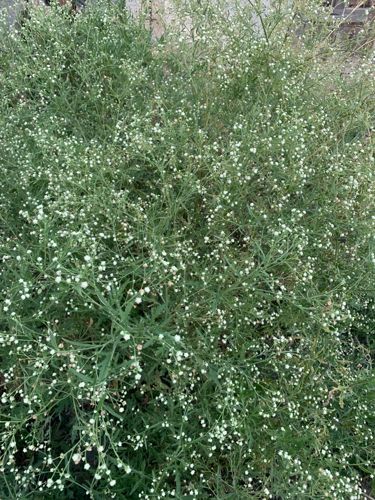Parthenium Hysterophorus
Scientific Name: Parthenium hysterophorus
Plant Family: Asteraceae
Native Region: North America (particularly the Gulf Coast of the United States and Mexico), but it is an invasive species in many other parts of the world, including Asia, Africa, and Australia.

Brief Description
Parthenium hysterophorus, commonly known as parthenium, congress grass, or carrot grass, is an erect, annual herbaceous weed. It typically grows about 1 to 2 meters tall, branching profusely. The stems are grooved and covered in fine hairs. Its leaves are deeply lobed and fern-like, resembling carrot leaves. The plant produces numerous small, white, discoid flower heads clustered in loose terminal or axillary panicles, giving it a somewhat bushy appearance when in full bloom, as seen in the image. It produces a large number of very small, blackish seeds.
Care Instructions
Parthenium hysterophorus is an aggressive weed and generally does not require care; instead, control methods are often employed. It thrives in disturbed soils, roadsides, agricultural lands, and pastures. Control methods include: 1. Manual removal: Pulling out young plants before flowering is effective but can be labor-intensive and may cause allergic reactions. 2. Chemical control: Herbicides like glyphosate, 2,4-D, and metribuzin are used, but repeated applications may be necessary. 3. Biological control: Introducing natural enemies, such as insects like Zygogramma bicolorata (Mexican beetle), which feeds on the plant, has shown some success in certain regions. 4. Cultural control: Promoting competitive vegetation can help suppress its growth. Crop rotation and proper fertilization can also reduce its prevalence in agricultural settings. Gloves and protective clothing are recommended when handling this plant due to its allergenic properties.
Medicinal Value
We do not currently provide medicinal value for plant identifications.
Created At: 2025-09-20T00:26:23.819037